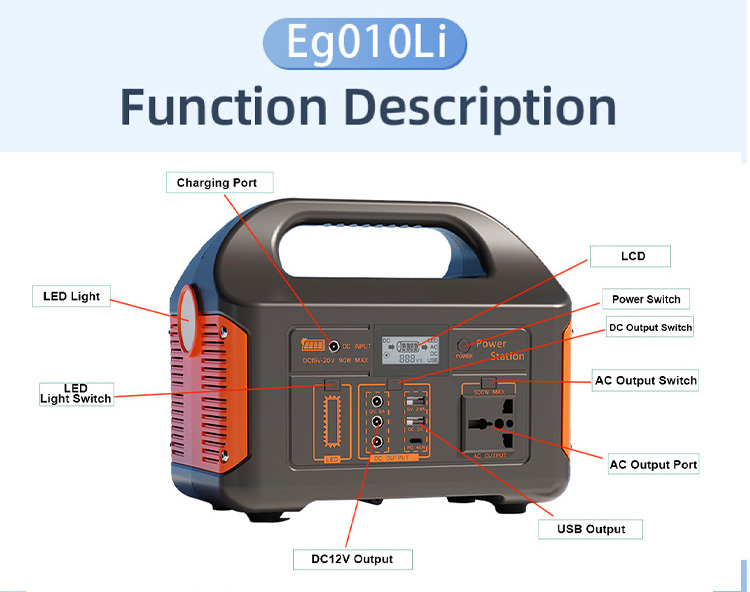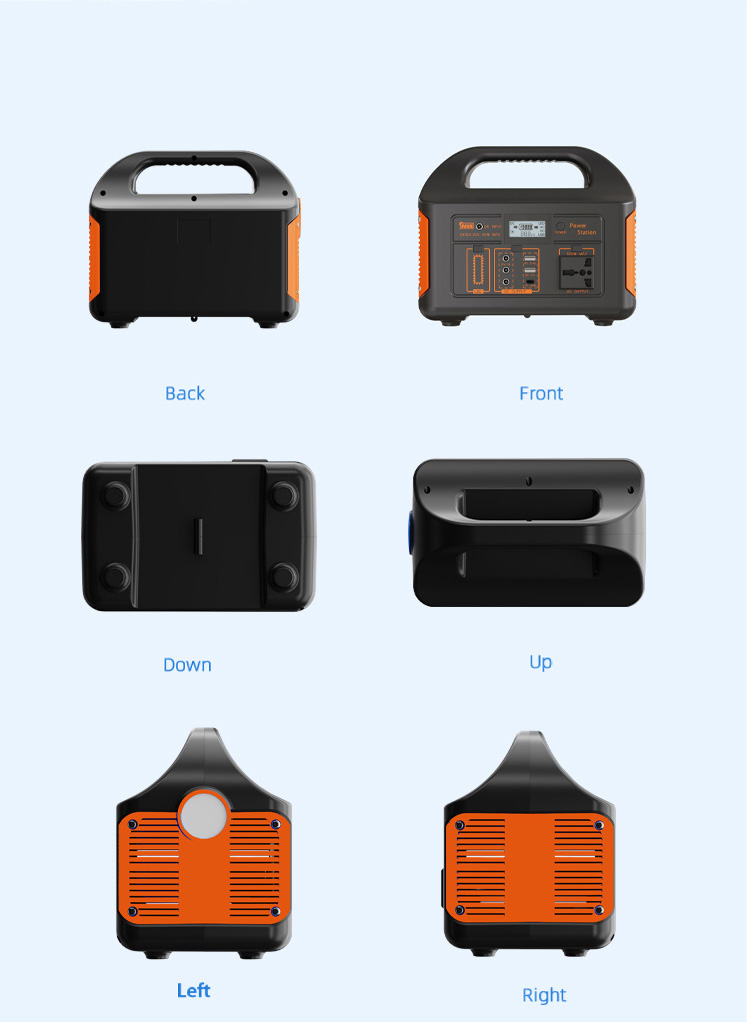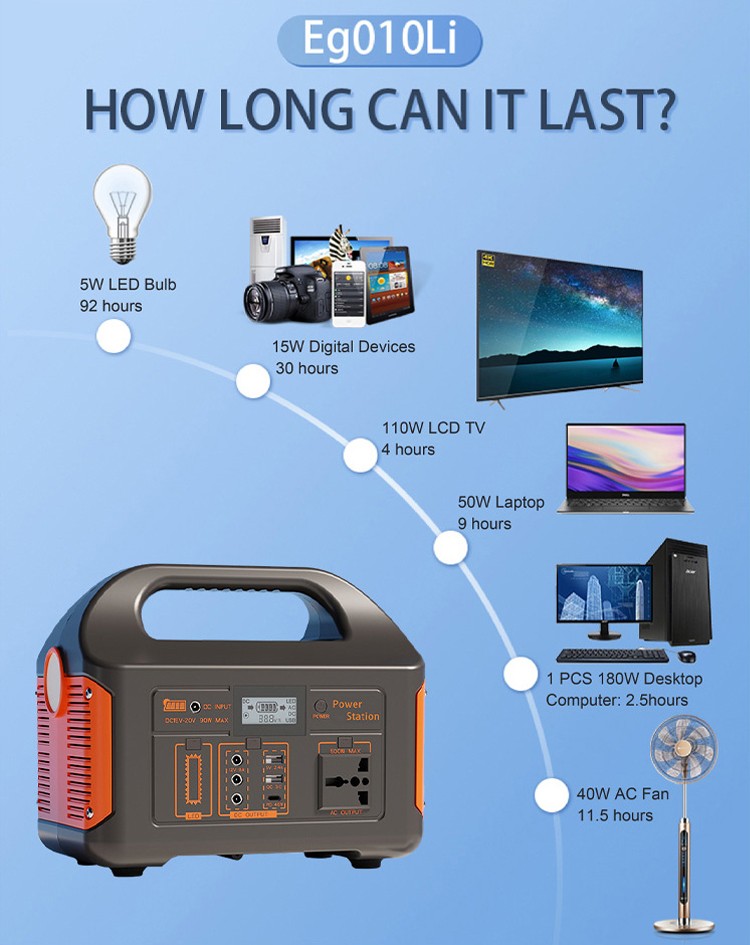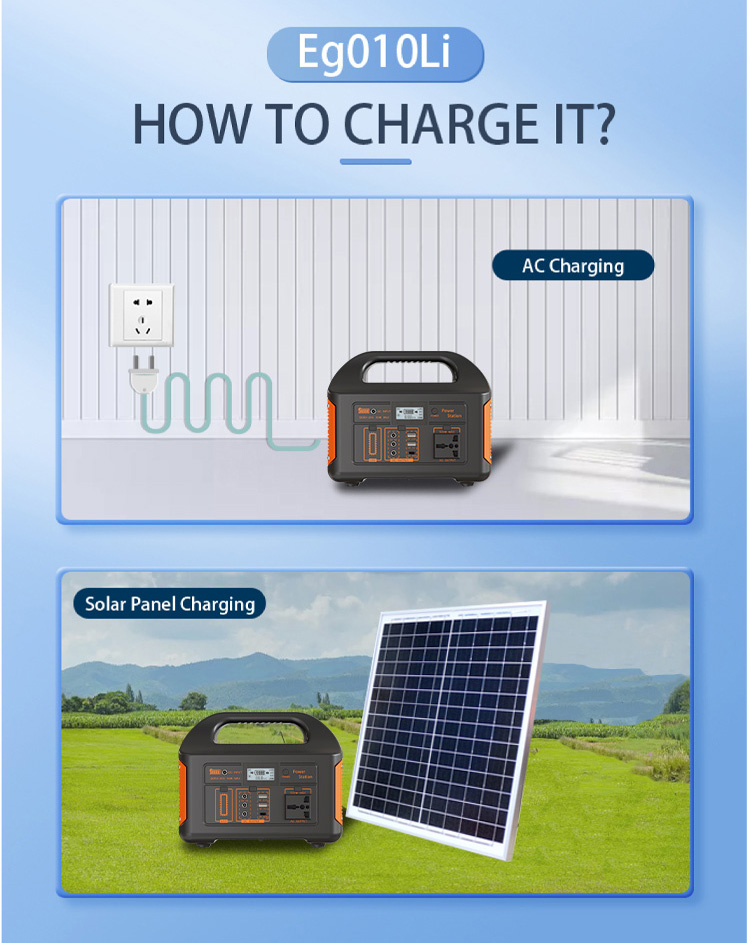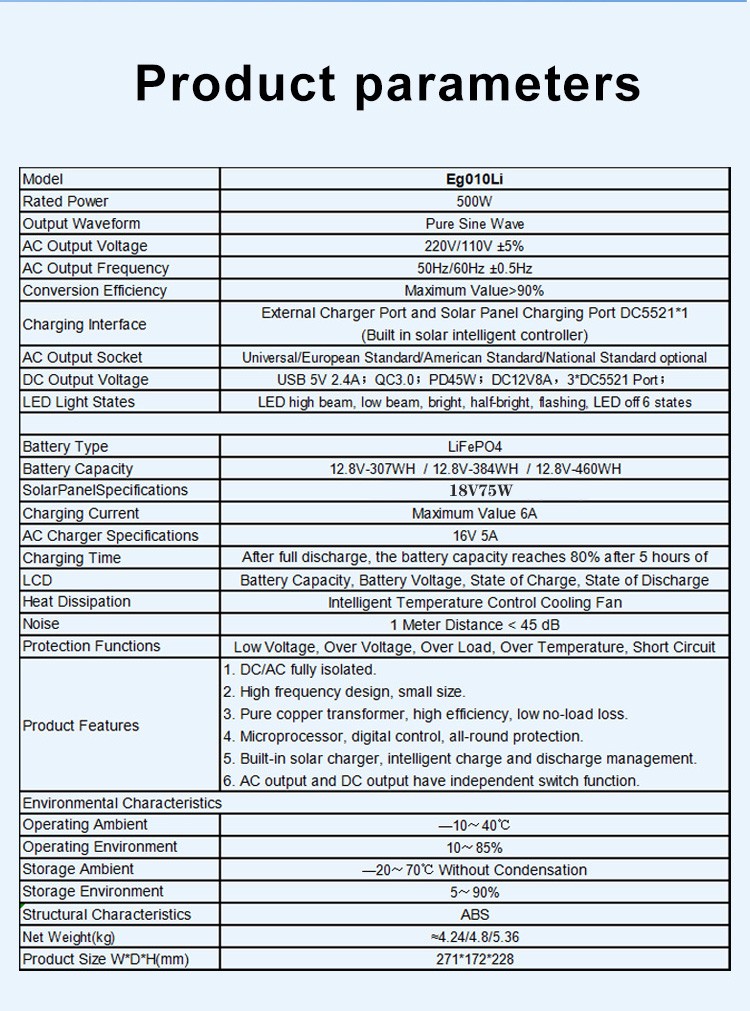
Battery life and cycle degradation mechanism of portable power station
May. 16, 2025
Battery type: Different types of batteries have different characteristics and lifespans. Among common lithium-ion batteries, the cycle life of lithium iron phosphate is generally longer than that of ternary lithium batteries. For example, under proper use conditions, the number of cycles of lithium iron phosphate batteries can reach more than 2,000 times, while the number of cycles of ternary lithium batteries is usually around 1,000-1,500 times. It is necessary to simulate the actual charging and discharging scenarios through long-term cycle tests (such as GB/T 36276-2018) and record the capacity decay curve. For example, the capacity of a ternary lithium battery may decay to 80% after 500 cycles, while that of a lithium iron phosphate battery can reach more than 2,000 times.
Ambient temperature of use: Temperature has a significant impact on battery life. High temperatures accelerate the chemical reactions inside the battery, causing the battery to age faster; low temperatures reduce the battery's performance and charging and discharging efficiency. Generally speaking, the suitable operating temperature range for portable energy storage power supplies is between 0°C and 40°C.
· Charge and discharge depth: Shallow charge and discharge are beneficial to extend battery life, while deep charge and discharge will cause greater damage to the battery. For example, deep charge and discharge cycles from 100% to 0% or from 0% to 100% will cause the battery capacity to decrease faster.
· Charge and discharge rate: Rapid charge and discharge with large current will generate more heat, aggravate the polarization phenomenon inside the battery, and thus shorten the battery life.
Cycle attenuation mechanism
· Changes in electrode materials: During the charge and discharge process, the positive and negative electrode materials of the battery will undergo chemical reactions and structural changes. For example, after multiple charge and discharge cycles, the positive electrode material of a lithium-ion battery may experience lattice structure destruction and lithium ion loss, resulting in a gradual decrease in the battery capacity.
· Electrolyte loss: The electrolyte plays a role in transmitting lithium ions during the battery charge and discharge process. As the number of cycles increases, the electrolyte will undergo decomposition, volatilization and other losses, affecting the transmission efficiency of lithium ions, which in turn leads to a decrease in battery performance.
· Side reactions inside the battery: Some side reactions will occur during the charge and discharge process of the battery, such as lithium deposition and gas production. Lithium deposition will cause a short circuit inside the battery, and gas production will increase the internal pressure of the battery, which will have an adverse effect on the structure and performance of the battery and accelerate the battery's degradation.

